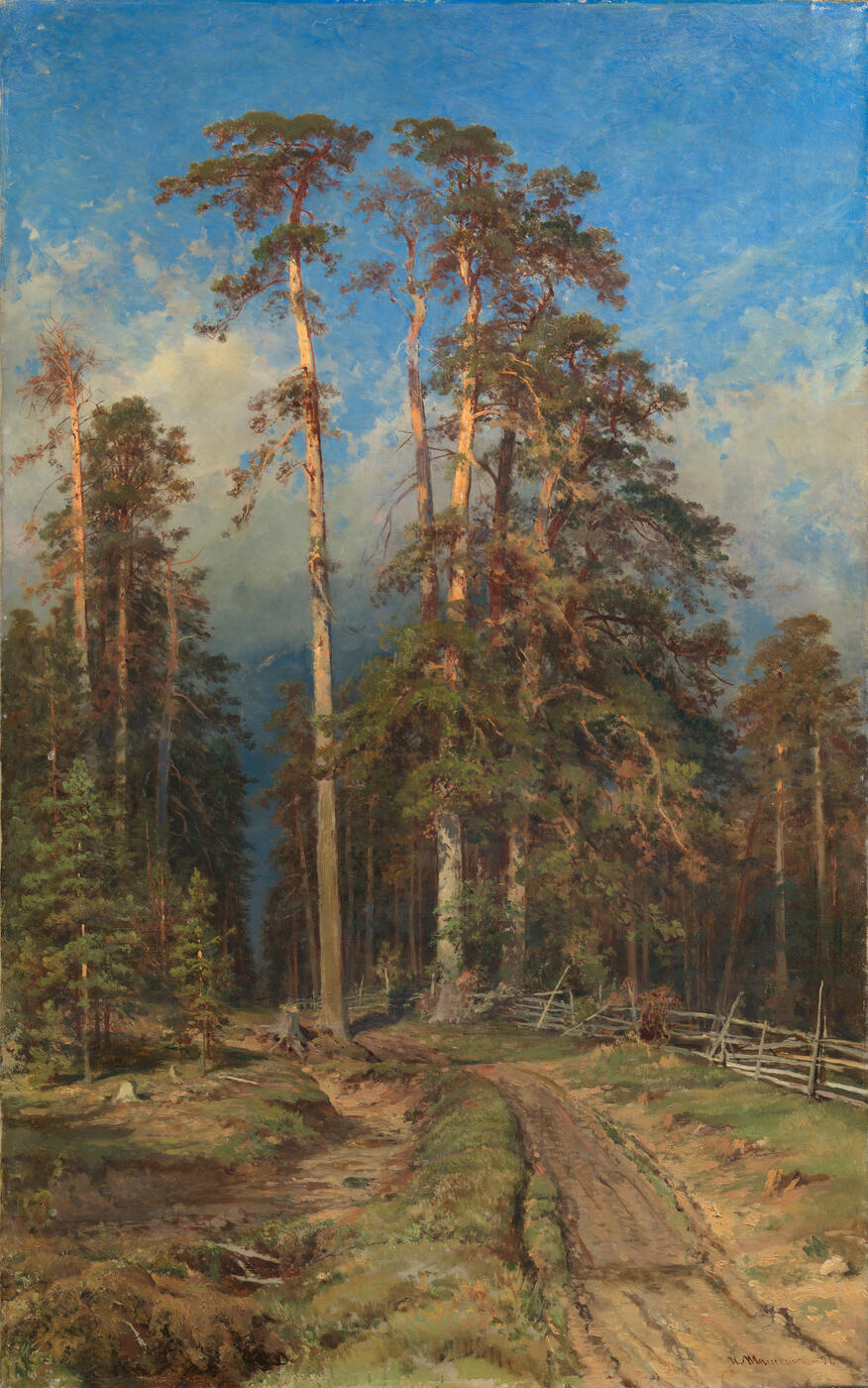6 June 2018 Russian Art Auctions
6 June 2018

* 11. SHISHKIN, IVAN (1832-1898)
Pine Forest. Yelabuga, signed and dated 1897.
Oil on canvas, 147 by 91 cm.
800,000-1,200,000 GBP
Provenance: Private collection, Switzerland.
Russian Works of Art, Christie’s Geneva, 16 November 1994, lot 413.
Important private collection, Europe.
Authenticity of the work has been confirmed by the expert V. Petrov.
Exhibited: Possibly, Posmertnaia vystavka proizvedenii I.I. Endogurova, I.I. Shishkina i N.A. Yaroshenko, Imperial Academy of Arts, St Petersburg, 1898.
Possibly, Posmertnaia vystavka kartin professora I.I. Shishkina, Moscow, 1904.
Literature: Possibly, exhibition catalogue, Katalog Posmertnoi vystavki proizvedenii I.I. Endogurova, I.I. Shishkina i N.A. Yaroshenko, St Petersburg, 1898, listed.
Zhivopisnoe obozrenie, No. 2, 1899, p. 32, illustrated in black and white.
Possibly, exhibition catalogue, Posmertnaia vystavka kartin professora I.I. Shishkina, Moscow, 1904, No. 3.
Reproduced on a postcard, Moscow, before 1917.
Related literature: For another version of the present lot, see G. Romanov, Tovarishchestvo peredvizhnykh khudozhestvennykh vystavok.1871–1923 gg. Entsiklopediia, St Petersburg, Sankt-Peterburg Orkestr, 2003, insert between pp. 192 and 193, illustrated; p. 216, No. 2–251, illustrated and listed.
Pine Forest. Yelabuga by the unsurpassed master of landscape Ivan Shishkin, offered here for auction, is one of his most typical and important works.
It was not unknown for Shishkin to repeat his most beloved compositions, adding almost unnoticeable, yet key changes to perfect them. The same is true about the present painting, which is a version of the work Pine Forest. Sukhostoi exhibited at the Itinerant exhibition in 1899, after the artist’s death. Although the difference in the compositions is hardly noticeable, both these canvasses are independent artworks, in which Shishkin ponders over some deeply personal creative objectives.
In the 1890s Shishkin paints a whole series of famous landscapes, striking by their dimensions. Shishkin was one of the few artists, whose draughtsmanship skills and mastery only improved over years, achieving new highs during each stage of their artistic life. During this period, he reaches his creative peak, fully grasping the unique language of nature. The artist often turns to painting his beloved pine forest and his mood and contemplations were inextricably linked with the landscapes he painted.
Such philosophical understanding of nature can also be witnessed in the present work. In Pine Forest. Yelabuga, Shishkin contemplates life and death through painterly language: the stub on the left of the central tree and the dried up pines in the background symbolise the withering of life, while the sunlit green shrubbery in foreground, conversely, embody a new life asserting itself. The forest path, disappearing into the background, represents a life journey, and the approaching heavy clouds, which fuse with the path, remind us of the inevitable darkness at the end of one’s life. They also contrast with a sunlit forest clearing in the front that symbolises the present.
In response to the avant-garde trends in Russian art, which started in the early 1890s and which strove to express more complex and delicate states of nature resonating with the spiritual states of people, Shishkin resolutely remained true to himself, changing nothing in his style, honed over the years of hard work. Its main components — strict line, clarity of form, accurate colour relations and remarkable plasticity of the brushstroke — stayed on.
Shishkin captures this typical for the artist yet simultaneously unique scene with swift, easy brushstrokes, which convey the immediacy of perception and the intensity and freshness of a first impression. In the present work, the artist brilliantly demonstrates his understanding of nature as the unity of its components. Pine Forest. Yelabuga is truly one of the best examples of “epic landscape”, developed by Shishkin, and is undoubtedly of museum quality.
We are grateful to the art historian Dr Elena Nesterova for providing additional catalogue information.
Notes on symbols:
* Indicates 5% Import Duty Charge applies.
Ω Indicates 20% Import Duty Charge applies.
§ Indicates Artist's Resale Right applies.
† Indicates Standard VAT scheme applies, and the rate of 20% VAT will be charged on both hammer price and premium.